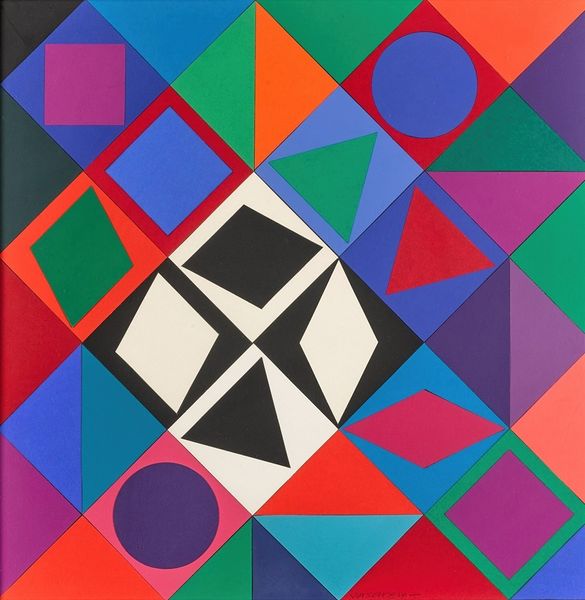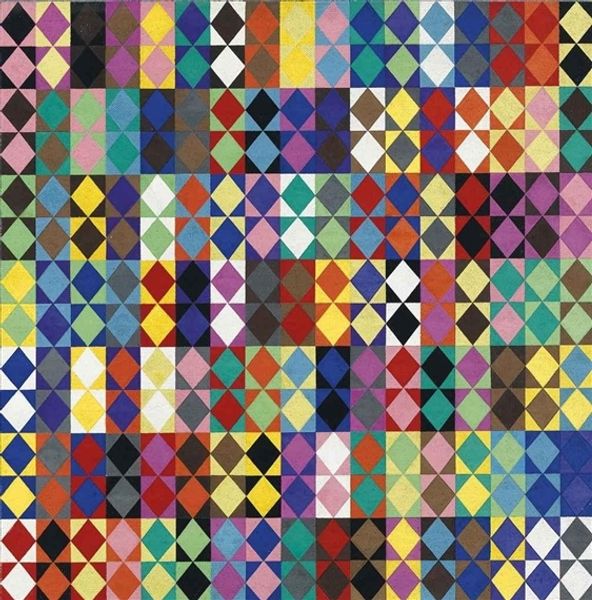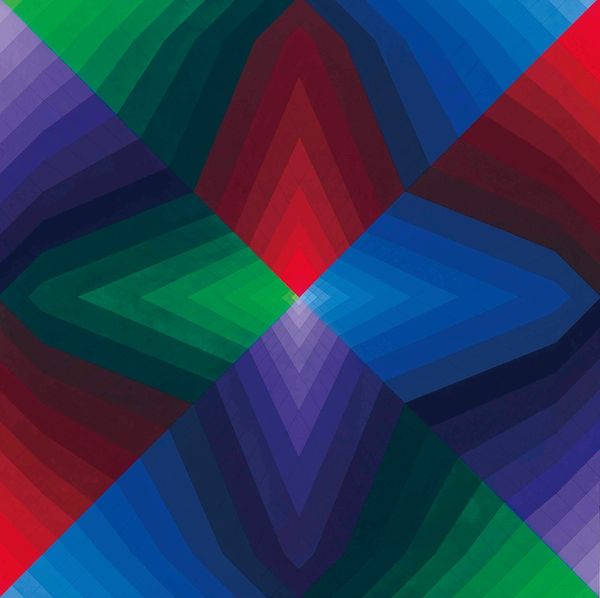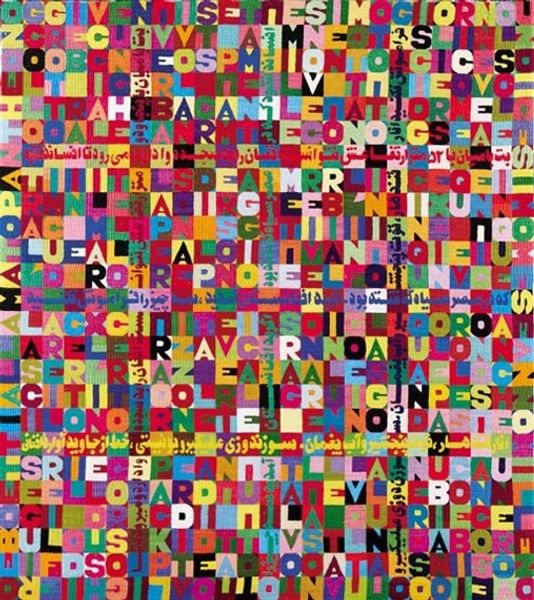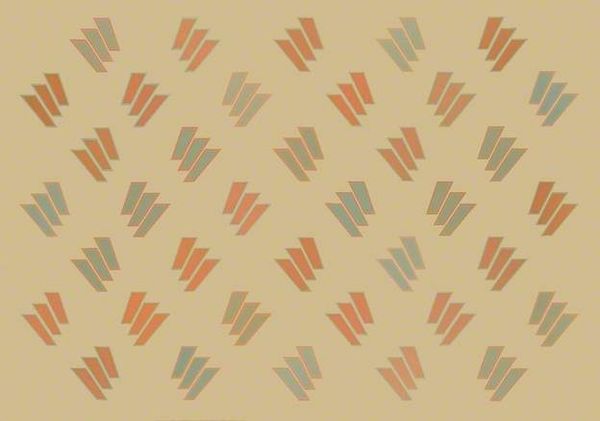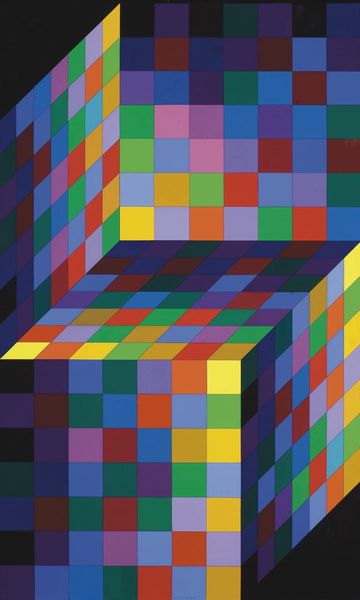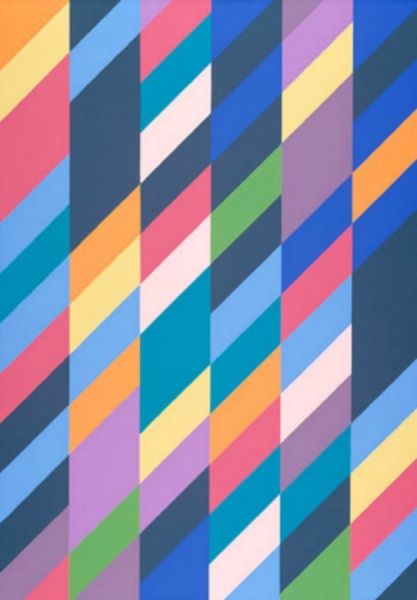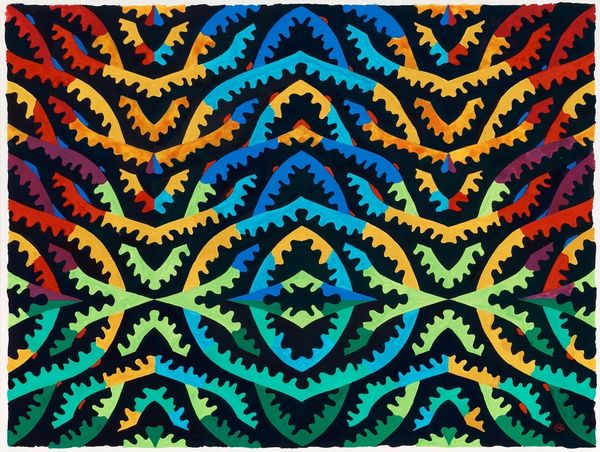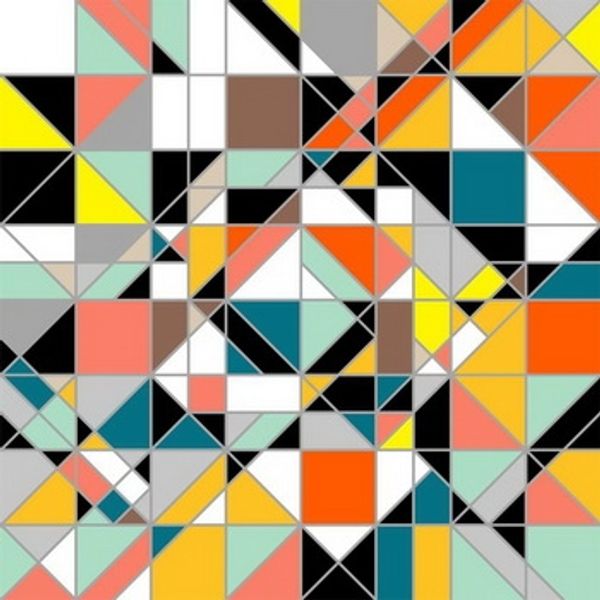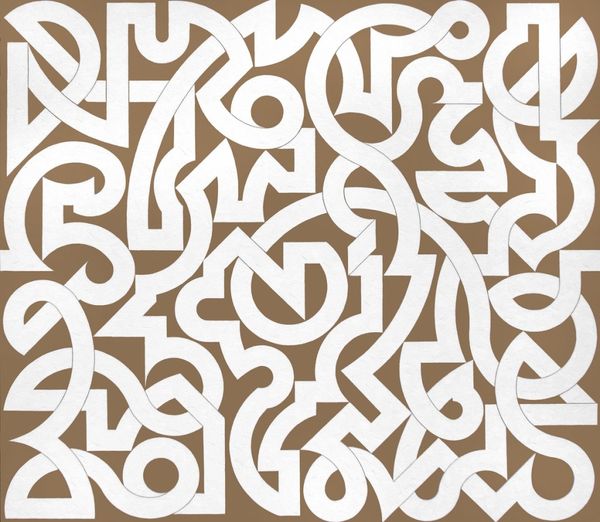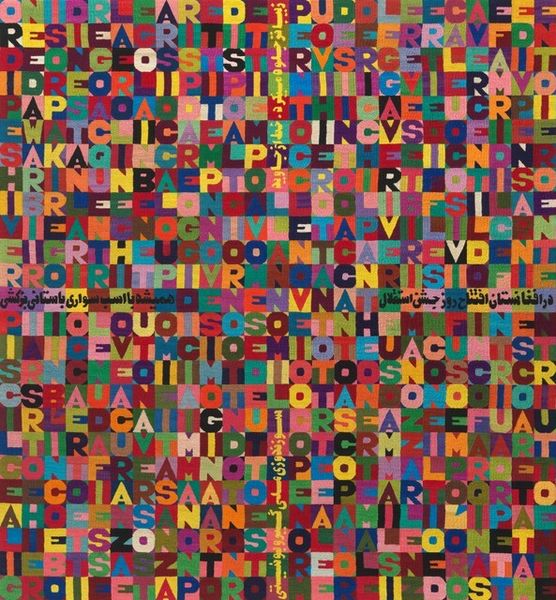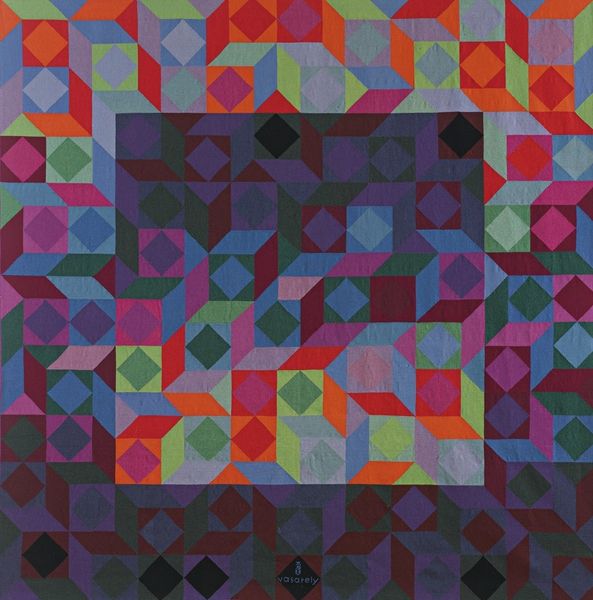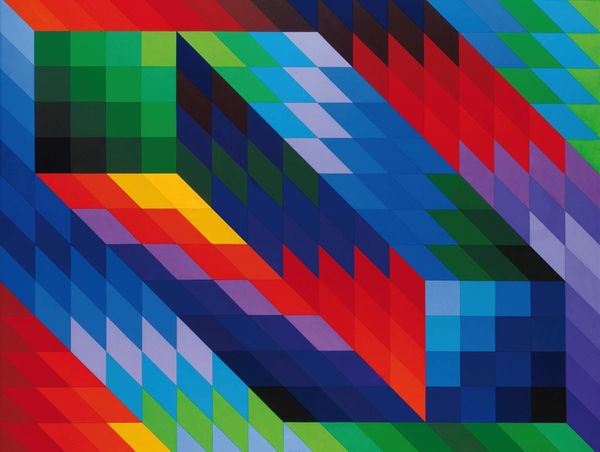
#
neo-pop
Copyright: Modern Artists: Artvee
Curator: This is Takashi Murakami’s "Superflat Monogram," created in 2003 using mixed media. The canvas presents a dense field of colorful, repeating patterns against a stark black background. What’s your immediate reaction to this piece? Editor: It’s… vibrant, almost aggressively so. The high contrast and repetitive logos give it a somewhat dizzying effect, like an opulent funhouse mirror reflecting back consumer culture. Curator: Precisely. Murakami's engagement with both "high" art and commercial culture is central to his Superflat aesthetic. This work utilizes the iconic Louis Vuitton monogram, turning a luxury brand into a flattened, democratized image through repetition and bright, almost artificial colors. The work was originally commissioned by Marc Jacobs to revamp Louis Vuitton's classic handbags in 2003, thereby marking an expansion into more diverse market and production strategies. Editor: The collaboration raises fascinating questions. By embedding high art into fashion and consumer goods, is he critiquing luxury, or complicit in its perpetuation? It certainly highlights the fetishization of brands and the ways they infiltrate our visual landscape. What does it mean when luxury emblems become deconstructed, colorful symbols? It speaks, in particular, to how globalization distributes wealth across cultural and economic zones. Curator: I see it as both. The manufacturing process itself is relevant; despite the digital aesthetic, each piece requires careful labor, screen-printing multiple layers of ink onto canvas. By combining fine art techniques with a mass-produced symbol, Murakami is actively blurring those boundaries. In these strategies, "Superflat Monogram" interrogates how cultural capital is constructed, consumed, and ultimately, commodified. Editor: The very flatness that Murakami emphasizes is key to the work’s reading as a Pop Art commentary on surface and depth in contemporary society. It is not, if you like, the “real thing,” or some unique craft item, but instead something that mimics and gestures to what has gone before it in material culture. Curator: Absolutely. Thinking about it in terms of the labor involved, it offers insight into the often-hidden economies that power both the art world and the fashion industry. Editor: It makes you wonder about the ecological footprint inherent in the production of both the luxury item and its artistic representation. I feel we need to consider where the various economic actors are located as we witness it. Curator: That’s an insightful observation. Overall, a complex work, sparking debates about consumerism and creative agency. Editor: Indeed. It urges us to think critically about the intricate relationships between art, identity, and the marketplace, urging us to acknowledge how these relationships shape contemporary subjectivity and structures of desire.
Comments
No comments
Be the first to comment and join the conversation on the ultimate creative platform.

